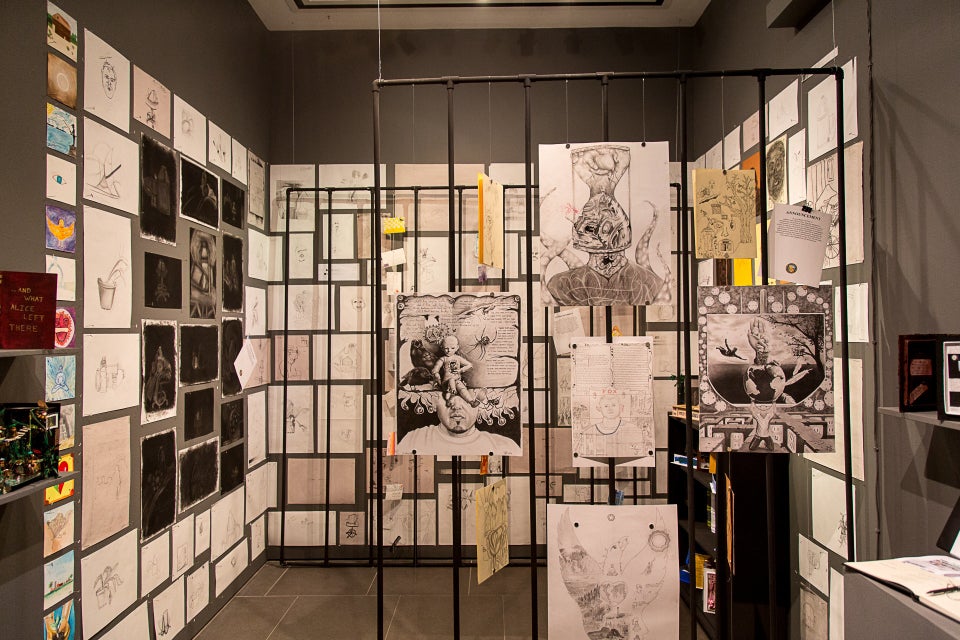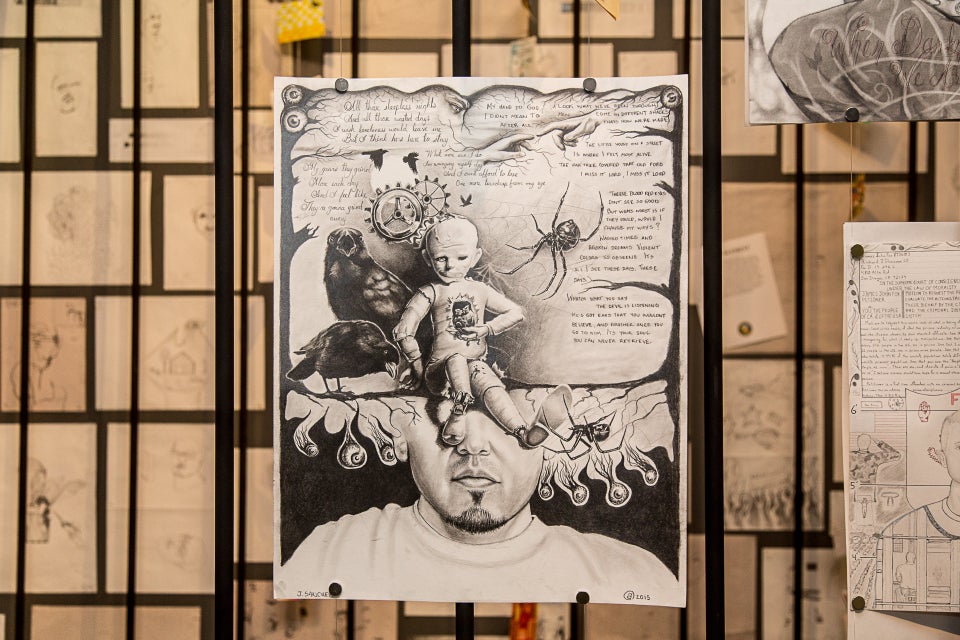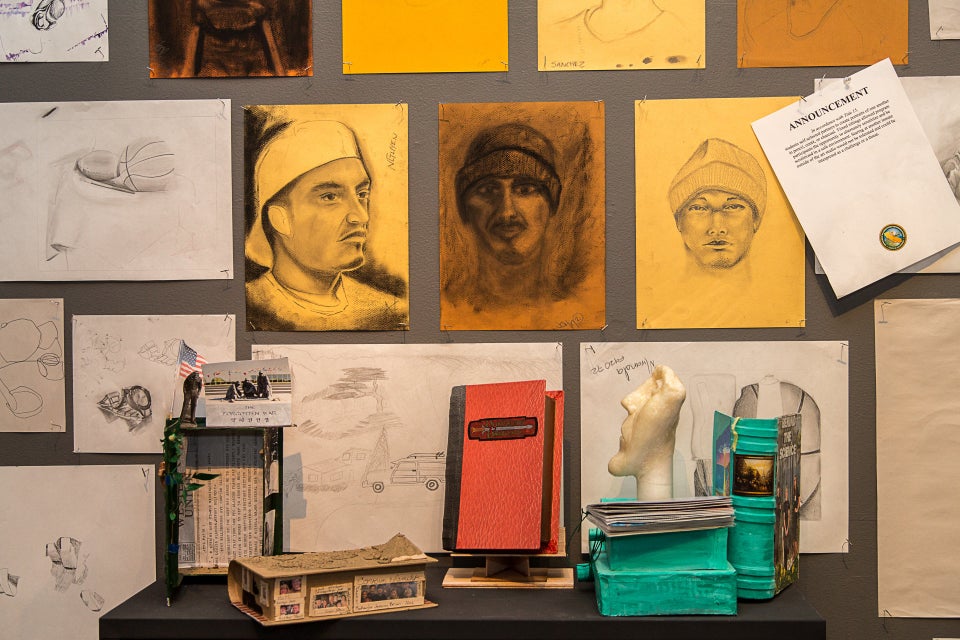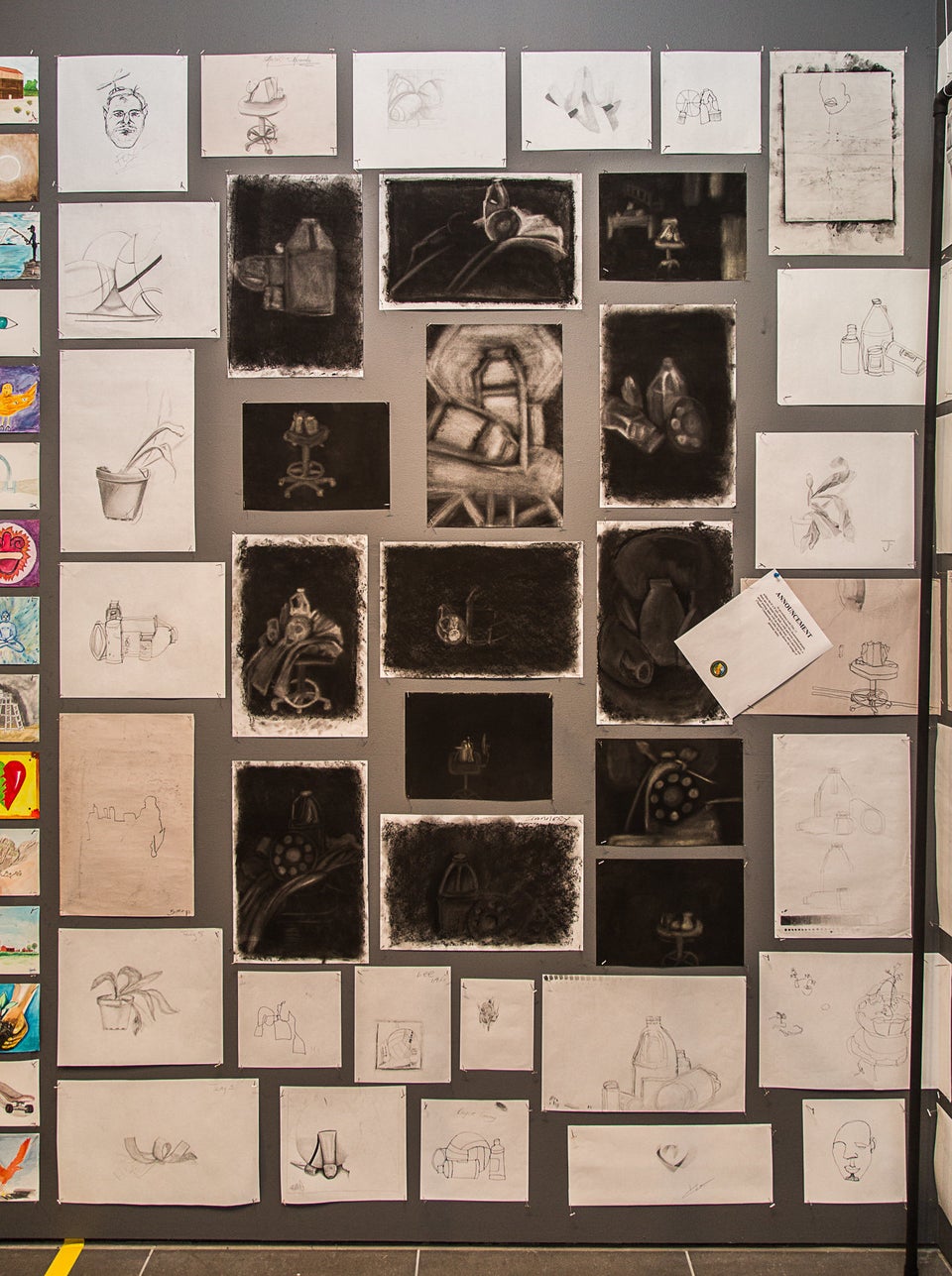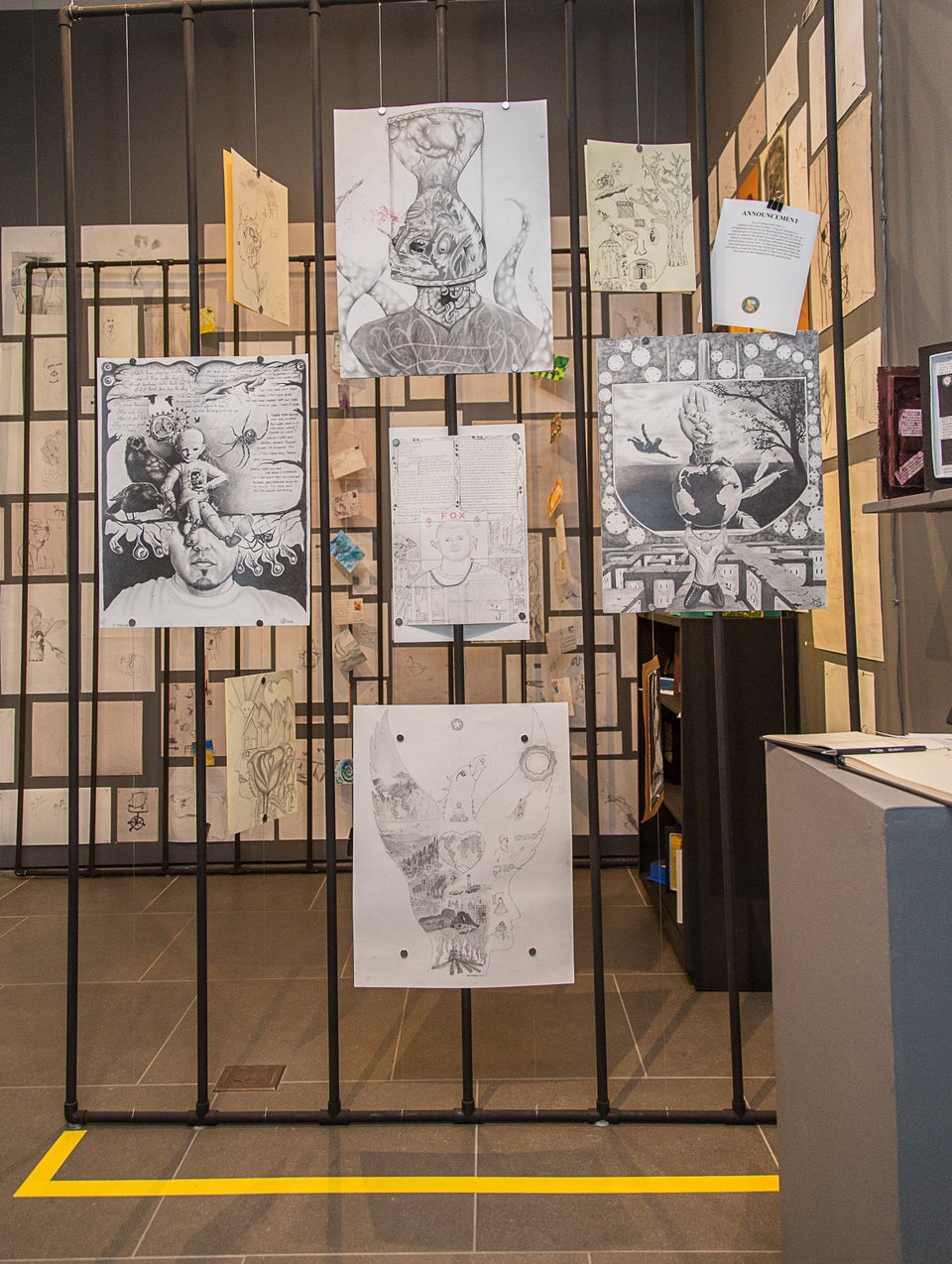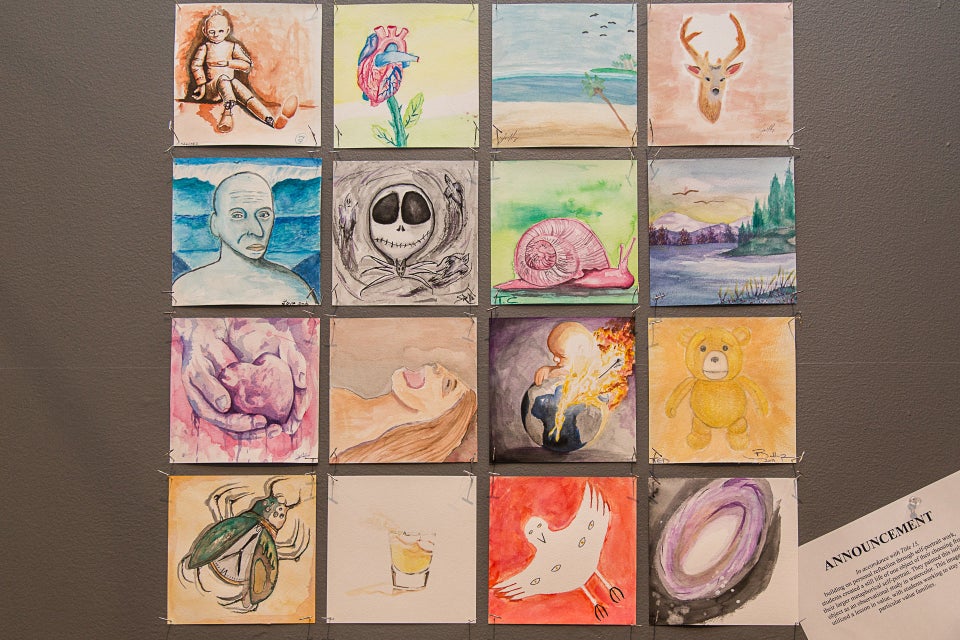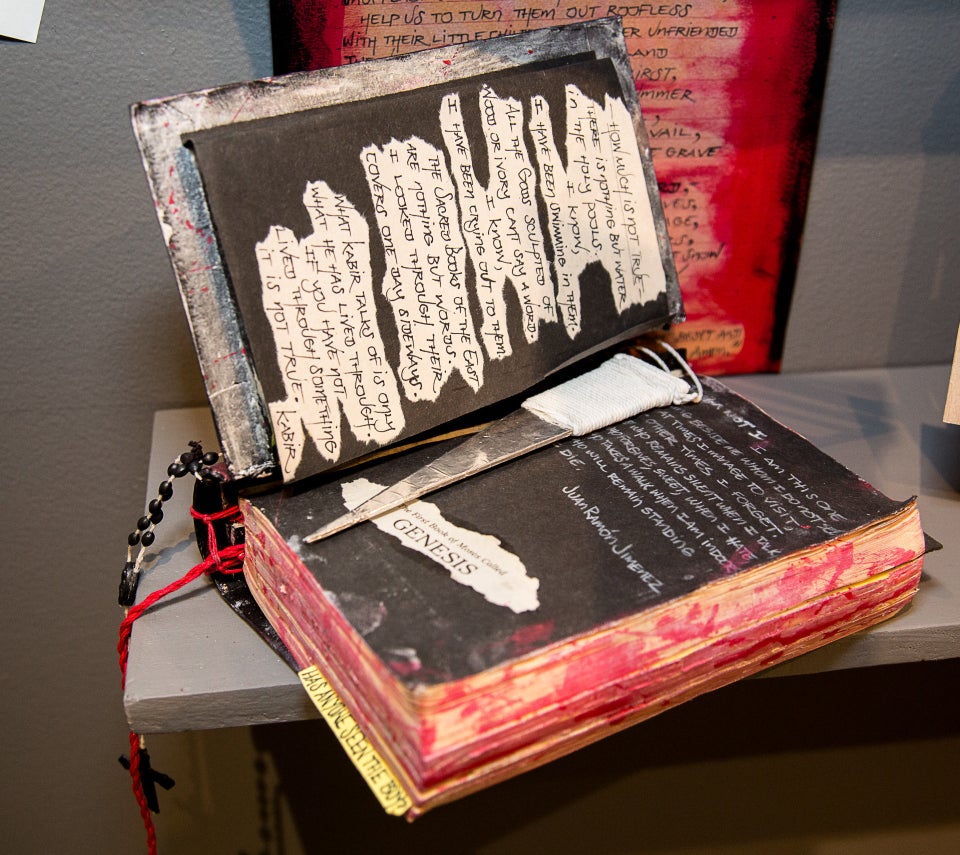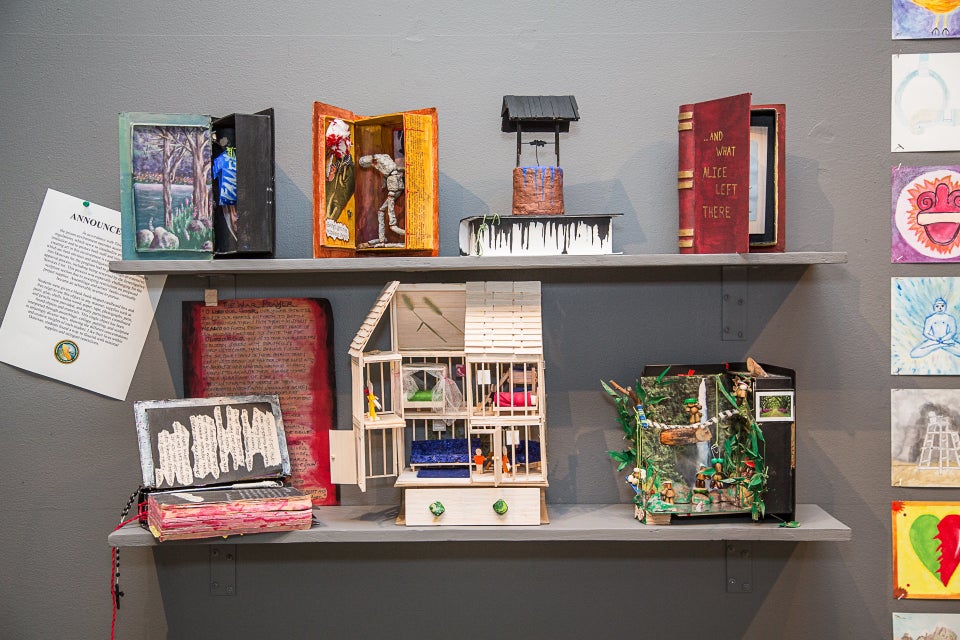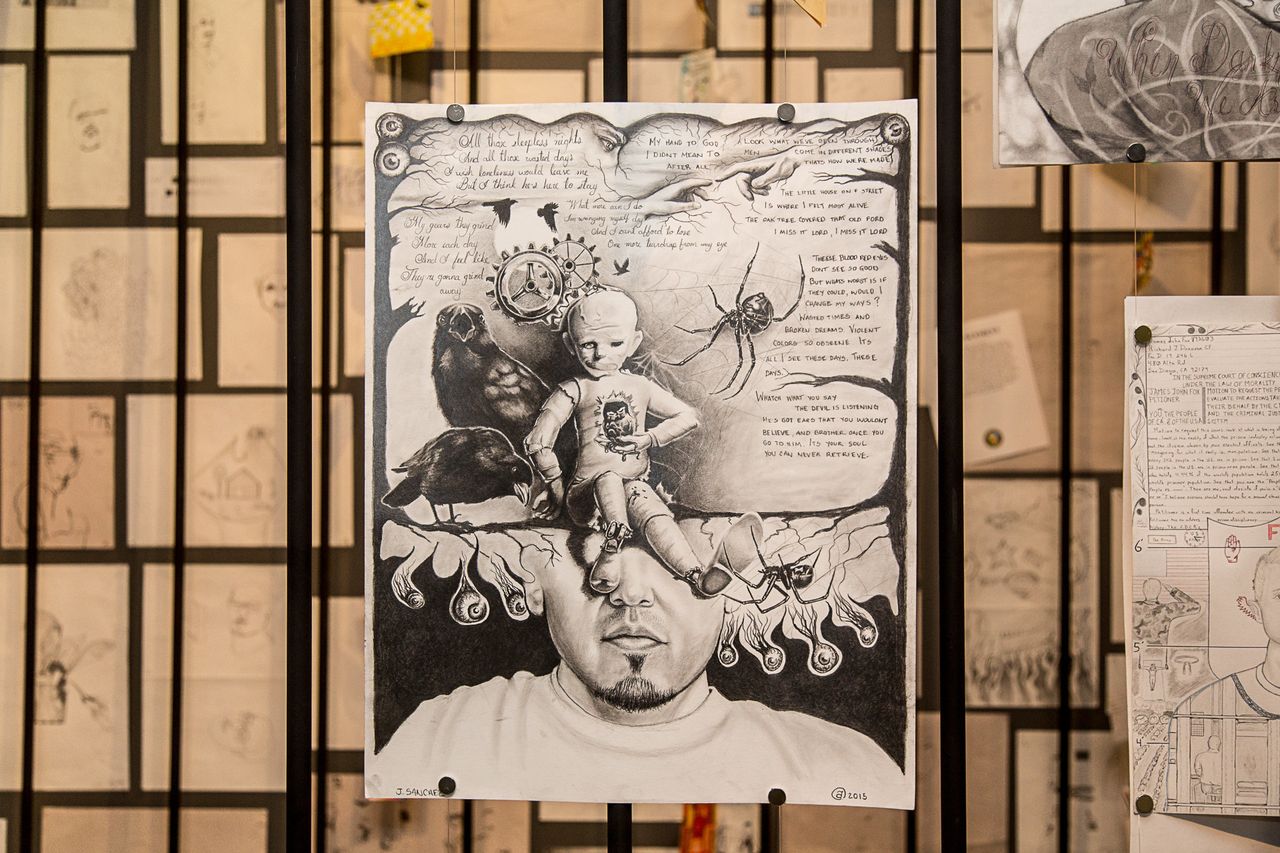When Laura Pecenco and Kathleen Mitchell began giving art lessons to the men incarcerated at Richard J. Donovan Correctional Facility in Southern California, they had trouble selling the merits of self-portraiture. A particular inmate grew physically agitated in response. He threw down his pen, yelling, “I don’t do introspection!” But, weeks later, he crafted a thoughtful reflection of his own image.
Pecenco founded Project PAINT: The Prison ArtsINiTiative as a way of studying masculinity and creativity in prisons -- the topic of her dissertation -- but found the project to be more rewarding than expected. Though much of the work produced by the men, who are guided through exercises in crafting charcoal drawings and 3D mobiles, centers on the passage of time, themes of transformation ripple throughout, too.
“One of our participants visually depicted her gender transition, using a butterfly as an analogy,” Pecenco told The Huffington Post. Another found that the programs portraiture projects allowed for direct eye contact and other forms of intimacy generally feared within the facility's walls. Below, Pecenco shares more about the power of self-reflection for incarcerated men:
How did you begin working for a prison arts initiative?
My dissertation is about the gendering of men who create art while incarcerated (examining the concept of hypermasculinity) and I wanted to study this topic by actually participating in a prison arts program. At the time though, California had defunded the Arts-in-Corrections program. I decided to start an arts program (determination goes a long way!), and everything has really fallen into place.
What does a prison arts program entail? Is instruction more craft-oriented, or is the focus on introspection?
Our prison arts program encompasses both the technical and the conceptual. We provide arts instruction in specific techniques and mediums, but we focus a lot on the process of creating itself, as well as exploring understandings of "good" art. For every class, I come up with a written reflection assignment for our participants to bring in the following week. This is designed to complement the artistic practice. We then start each class with a discussion of those reflections, and it is really incredible to be able to talk as a group about the process of creating art, and to see how it evolves over time.

What, in your opinion, is the most valuable takeaway for prisoners involved in the program?
I believe that it is very important for the program participants to recognize the power that they have as creators, that their voices are important and can be expressed in a multitude of ways. Being a part of a community of people exploring art is also important to me, and I want our participants to feel like they have a space where they can (at least somewhat) relax in such a tense environment. Thankfully, many of our participants have indicated that they are comfortable in the arts program and you can really see this emerge in their artwork and reflection assignments.
Are there any specific success stories you'd like to share?
One participant [...] reminded me the other day that the drawing he included in his application materials was "pretty much a stick figure," and today he is producing high-quality paintings and is a prolific artist.
Another participant wanted to do a traditional military-style shadow box. He ran into some issues in finding the right supplies for the project and got a bit discouraged during the process. However, he persisted, went into problem-solving mode, and ended up with a truly amazing end product. His shadow box is so clever -- he even constructed a naval ship entirely out of thin sheets of balsa wood to sit on the cover!
Time is a very important concept for many of the incarcerated participants. Although time in the long term is often portrayed in a seemingly never-ending way, time in the short term is actually hard to come by.
Are there themes or subjects that are commonly explored?
Time is a very important concept for many of the incarcerated participants. Understandings of time in prison are fascinating; although time in the long term is often portrayed in a seemingly never-ending way (something to be "done"), time in the short term is actually hard to come by! One a day-to-day basis, many of the prisoners have packed schedules. These variations on time are brought up regularly. A number of the participants have examined what sentences and time overall mean in their work.
Many of the men explained that they felt a little awkward staring at another man for an extended amount of time, and that such an act would not even be allowed to happen on the prison yard without potential consequences, but that it was acceptable and even perhaps a relief for them to be able to do so during class
Do you find that self-portraiture or self-reflection is particularly helpful?
Yes, self-portraits have helped to open up many of our participants as artists and as members of a community. Some of them already had artistic skill when they entered the program, and being able to work through projects like the metaphorical self-portrait assisted not just in developing additional technical skills but also in reflecting about themselves as individuals, as artists, as family members.
Doing portraits of one another has been very effective, as well; not only did they wind up with really wonderful end products, but the process of completing the partner portrait itself was really powerful and had profound consequences. Many of the men explained that they felt a little awkward staring at another man for an extended amount of time, and that such an act would not even be allowed to happen on the prison yard without potential consequences, but that it was acceptable and even perhaps a relief for them to be able to do so during class. One participant explained that on the outside he always made eye contact with people but that he can't do so in prison.
